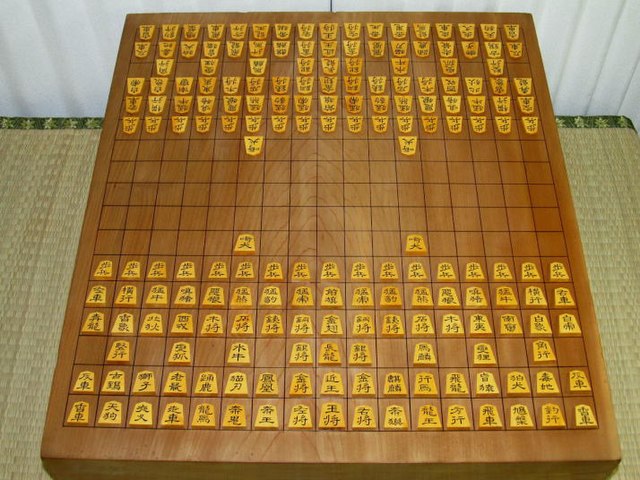Dai dai shōgi is a large board variant of shogi. The game dates back to the 15th century and is based on the earlier dai shogi. Apart from its size, the major difference is in the range of the pieces and the "promotion by capture" rule. It is the smallest board variant to use this rule.
Dai dai shogi set
Shogi , also known as Japanese chess, is a strategy board game for two players. It is one of the most popular board games in Japan and is in the same family of games as Western chess, chaturanga, xiangqi, Indian chess, and janggi. Shōgi means general's board game.
A game of shogi (Fortress opening)
A traditional shōgi ban (shogi board) displaying a set of koma (pieces). The pieces on the far side are turned to show their promoted values. The stands on either side are komadai used to hold captured pieces. The board itself is raised for the comfort of players seated on tatami mats (background), and is hollowed underneath to produce a pleasing sound when the pieces are moved.
Closeup of shogi pieces. Top: +R, R, K (reigning), K (challenging), B, +B. Bottom: +L, L, +S, S, G, N, +N, P, +P
Another popular style of shogi pieces different from the usual Japanese characters. Shows a 7-move tsumeshogi problem. White has pawns on 13, 24, 34; king on 23; and a promoted rook on 29. Black has a bishop on 44, a pawn on 17, a lance on 19, and a rook, two golds, and a silver in hand.





